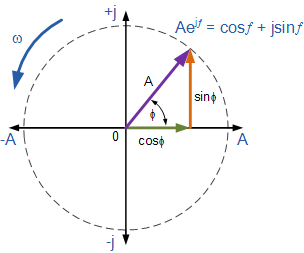Roots of Unity (and Beyond)

In this note, we will explain the mechanics for solving the roots of a complex number. It begins with a simple argument, then many elegant results follow.
We begin with the complex plane, where the vertical axis represents the imaginary numbers and the horizontal axis represents the real numbers (as pictured above). Normally, we define a complex number as , where are real numbers. We can also express the number in polar coordinates: and
(Sorry, engineers like to use phi for angles, and j for imaginary numbers)
If we treat and as the components of a vector with magnitude from the origin, we can represent all imaginary numbers in polar form
By the well-known Taylor expansions of , , and , we can easily show that
By treating this identity from a trigonometric perspective, we discover that ; hence, if we solve for , it follows that This implies that and where . Consequently, the roots of unity are
But what do we do to solve the roots of any complex number? Well, we have to make a transformation by finding the root of and adding to the angle value for the particular complex number! To visualize this, we look back at the diagram and notice the following:
1)For , the initial angle is zero. However, for we have .
2)For , the magnitude is one. However, for we have .
Hence the roots of a complex number are
for .
Check out my other notes at Proof, Disproof, and Derivation
Easy Math Editor
This discussion board is a place to discuss our Daily Challenges and the math and science related to those challenges. Explanations are more than just a solution — they should explain the steps and thinking strategies that you used to obtain the solution. Comments should further the discussion of math and science.
When posting on Brilliant:
*italics*or_italics_**bold**or__bold__paragraph 1
paragraph 2
[example link](https://brilliant.org)> This is a quote# I indented these lines # 4 spaces, and now they show # up as a code block. print "hello world"\(...\)or\[...\]to ensure proper formatting.2 \times 32^{34}a_{i-1}\frac{2}{3}\sqrt{2}\sum_{i=1}^3\sin \theta\boxed{123}Comments
@Steven Zheng Can you add this to Roots of Unity - Definition or Applications? Thanks!
Thanks. A good presentation.